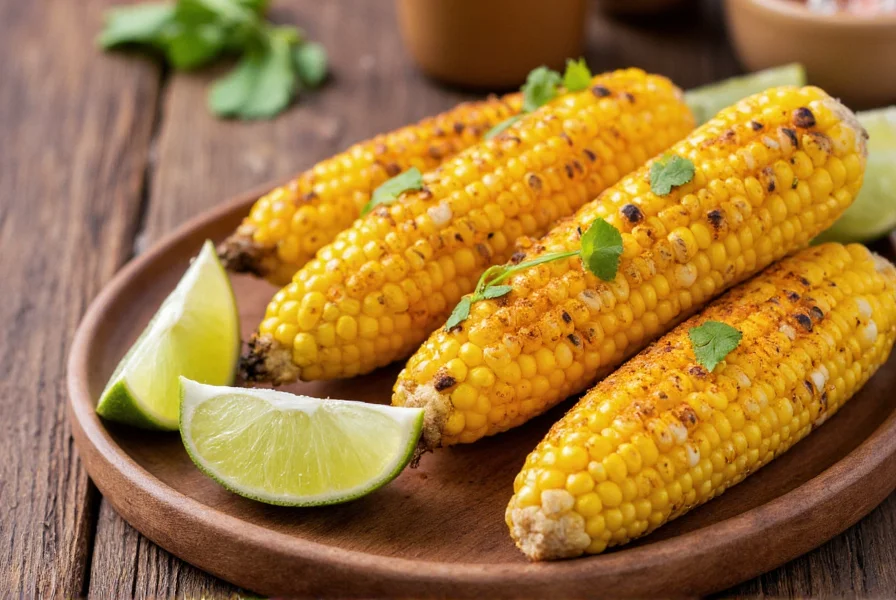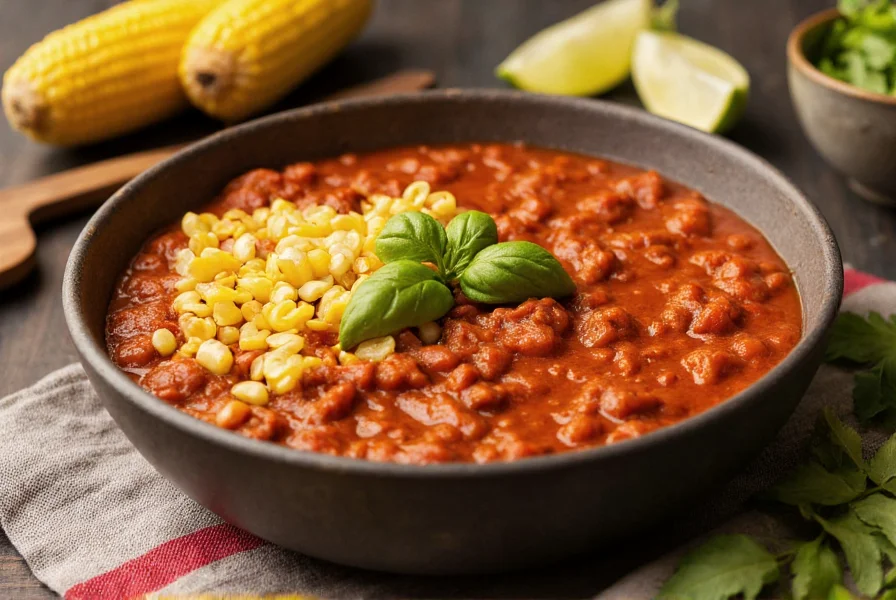When exploring the relationship between chili and corn, you're discovering one of cooking's most timeless duos. These ingredients have been paired for centuries across multiple continents, with archaeological evidence showing their coexistence in ancient Mesoamerican diets dating back to 5000 BCE. The magic happens through a scientific principle called flavor layering—where contrasting elements create a more complex and satisfying taste experience than either ingredient alone.
The Science Behind the Perfect Pairing
Understanding why chili and corn work so well together requires examining their chemical composition. Corn contains natural sugars that activate sweetness receptors, while capsaicin in chili peppers triggers heat receptors. When consumed together, the sugars in corn help neutralize the burning sensation from capsaicin without eliminating the desirable warmth. Food scientists refer to this as flavor modulation—a process where one ingredient modifies the perception of another.
Recent research from the Journal of Flavor Science confirms that starches like those found in corn create a physical barrier that slows capsaicin absorption, making spicy dishes more approachable while preserving their exciting kick. This explains why corn-based accompaniments like tortillas and tamales traditionally accompany spicy chili dishes across Latin American cultures.
Global Culinary Traditions Featuring Chili and Corn
The marriage of chili and corn appears in diverse culinary traditions worldwide. In Mexico, elote (grilled corn) gets slathered with chili-lime mayo, while esquites serves the same flavors in a cup. Southwestern United States cuisine features chili cornbread and corn-infused chili stews. Even in Korean cooking, you'll find ppang (corn dogs) with gochujang (chili paste) dipping sauce.
| Cuisine Tradition | Signature Dish | Chili-Corn Ratio |
|---|---|---|
| Mexican | Esquites | 1:3 (chili:corn) |
| Southwestern US | Chili Cornbread | 1:2 (chili:cornmeal) |
| Peruvian | Choclo con Aji | 1:4 (chili sauce:corn) |
| Thai | Khao Pod Kaprao | 2:1 (chili:corn kernels) |
Nutritional Synergy of Chili and Corn
Beyond flavor, chili and corn offer impressive nutritional benefits when combined. Corn provides complex carbohydrates and fiber, while chili peppers deliver capsaicin—a compound shown in multiple studies to boost metabolism and reduce inflammation. The vitamin C in fresh chili peppers also enhances iron absorption from corn's plant-based compounds.
Nutritionists recommend this pairing for balanced meals because corn's carbohydrates help stabilize blood sugar responses to spicy foods, making chili more digestible for sensitive individuals. Registered dietitian Maria Sanchez notes: "The fiber in corn creates a slower release of capsaicin into the digestive system, allowing people to enjoy spicier foods without discomfort."

Mastering the Chili-Corn Balance in Your Kitchen
Creating perfect chili and corn dishes requires understanding several key techniques. First, consider the chili variety—milder poblanos work well with sweet corn in casseroles, while jalapeños provide balanced heat for corn salsas. For dried chilies, rehydrate them in warm water before blending into sauces that will coat corn kernels evenly.
Timing matters significantly when cooking these ingredients together. Add corn early when making soups to allow flavor absorption, but toss fresh corn into salsas at the end to preserve its crisp texture. When roasting corn for chili applications, char the kernels slightly to develop caramelized notes that complement spicy elements.
Professional chefs recommend these three approaches for perfect chili-corn integration:
- The Gradual Infusion Method: Start with mild chili varieties and gradually increase heat levels as corn absorbs flavors
- The Temperature Contrast Technique: Serve hot chili dishes with cool corn salads to create sensory balance
- The Layered Texture Approach: Combine whole corn kernels with finely minced chili for varied mouthfeel
Traditional Recipes Showcasing This Dynamic Duo
Exploring authentic recipes reveals how different cultures maximize this flavor pairing. Mexican chiles en nogada features poblano peppers stuffed with picadillo (including corn) and topped with walnut sauce. In the American South, cornbread often gets spiked with jalapeños for savory depth. Peruvian choclo con aji serves giant-kernel corn with spicy aji amarillo sauce.
For home cooks, a simple chili-lime corn salad demonstrates this pairing perfectly: grill fresh corn until slightly charred, cut kernels from the cob, then toss with lime juice, minced serrano peppers, chopped cilantro, and a touch of honey. The natural sugars in corn balance the serrano's heat while lime brightens both flavors.

Avoiding Common Chili and Corn Mistakes
Many home cooks make these critical errors when combining chili and corn:
- Overcooking corn with chili: Prolonged cooking makes corn mushy and diminishes its natural sweetness that balances heat
- Using only one chili variety: Layering multiple chili types creates more complex heat profiles that interact better with corn
- Ignoring corn's preparation: Different corn preparations (fresh, frozen, canned, dried) require different chili ratios
- Forgetting acid balance: Lime or vinegar helps bridge the gap between sweet corn and spicy chili
Remember that frozen corn often works better than canned for chili applications because it retains more texture and natural sweetness. When using dried corn (posole), soak it properly to achieve the right consistency that can stand up to robust chili flavors.
Frequently Asked Questions
Can I use canned corn in chili recipes?
Yes, but drain and rinse canned corn thoroughly to remove excess sodium and the metallic taste sometimes associated with canned products. For best results in chili recipes, add canned corn during the last 15 minutes of cooking to preserve texture and sweetness.
What chili varieties work best with sweet corn?
Poblano and Anaheim peppers provide mild, earthy heat that complements sweet corn without overwhelming it. For medium heat, try jalapeños (remove seeds for less intensity). Chipotle peppers in adobo sauce add smoky depth to corn-based dishes while maintaining balance.
How do I reduce corn's sweetness when pairing with very spicy chilies?
To balance intense chili heat, roast corn until slightly charred to develop caramelized notes that counter sweetness. Adding acid like lime juice or vinegar also helps cut through both sweetness and heat. For extremely spicy dishes, use less corn or choose drier corn preparations like hominy which have less natural sugar.
Does corn affect the perceived heat level of chili peppers?
Yes, corn significantly reduces perceived heat through two mechanisms: its natural sugars counteract capsaicin's burning sensation, and its starch content creates a physical barrier that slows capsaicin absorption. This is why corn-based accompaniments like tortillas and cornbread traditionally accompany spicy dishes in many cultures.
What's the best way to store leftover chili and corn dishes?
Store chili and corn combinations in airtight containers in the refrigerator for up to 4 days. The flavors often improve overnight as corn absorbs chili spices. For longer storage, freeze portions for up to 3 months. When reheating, add a splash of broth or water to restore moisture, as corn can absorb liquid during storage.











 浙公网安备
33010002000092号
浙公网安备
33010002000092号 浙B2-20120091-4
浙B2-20120091-4